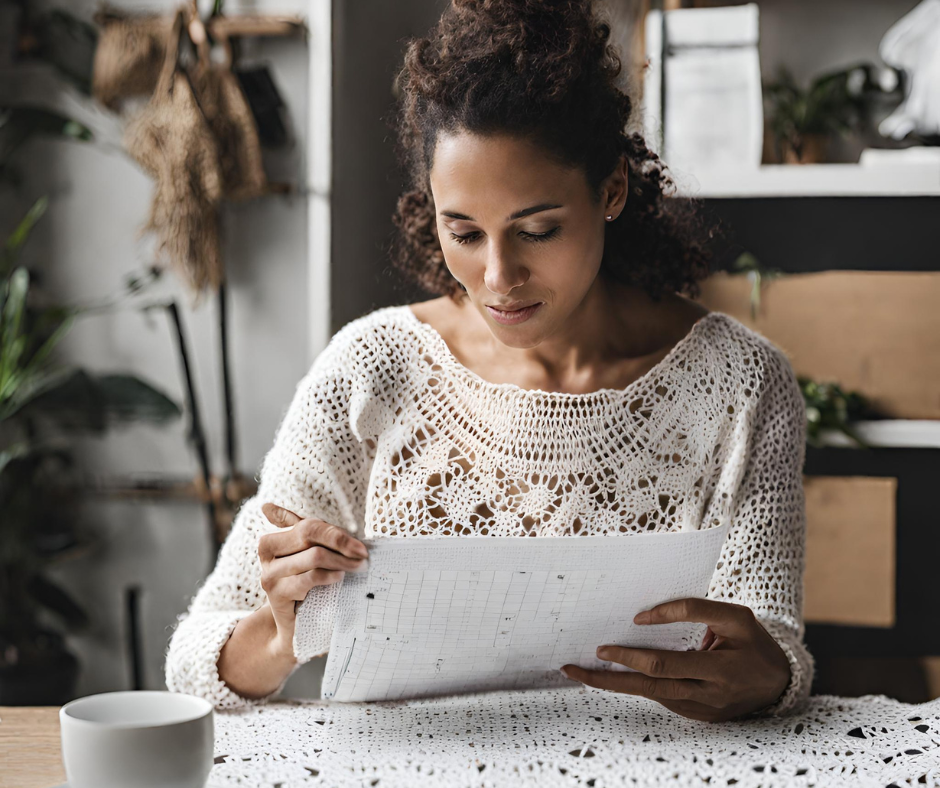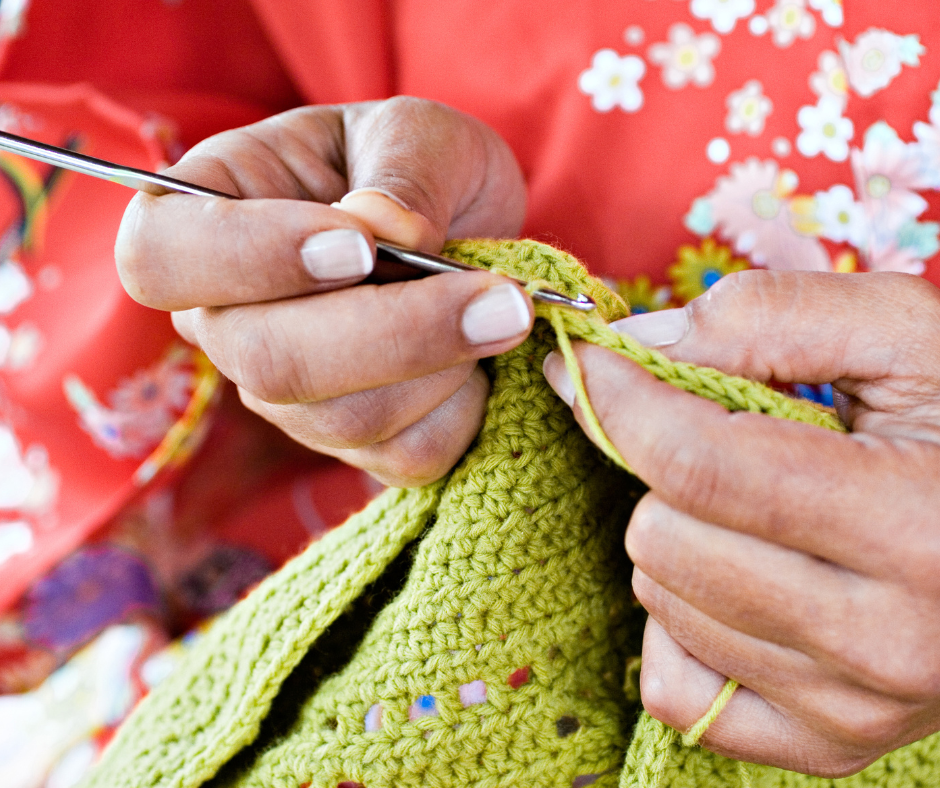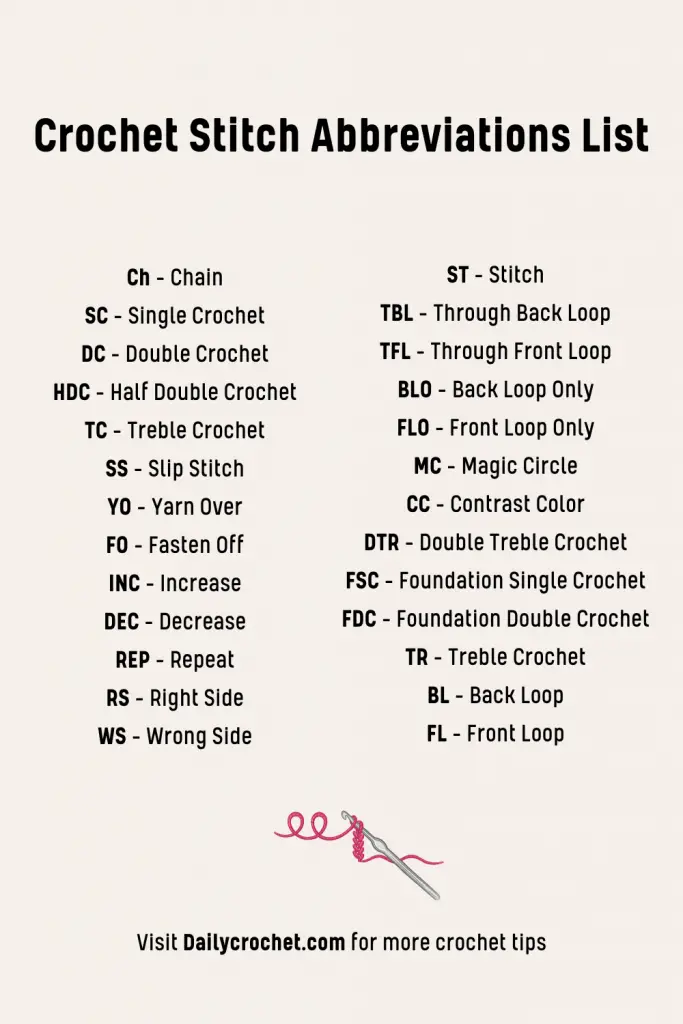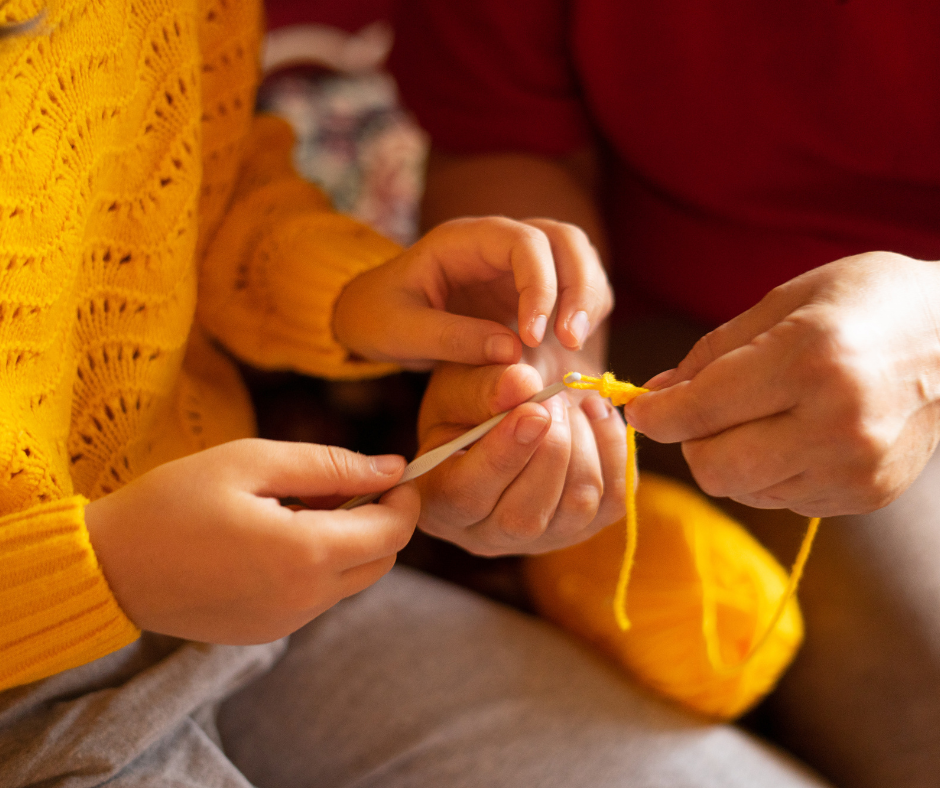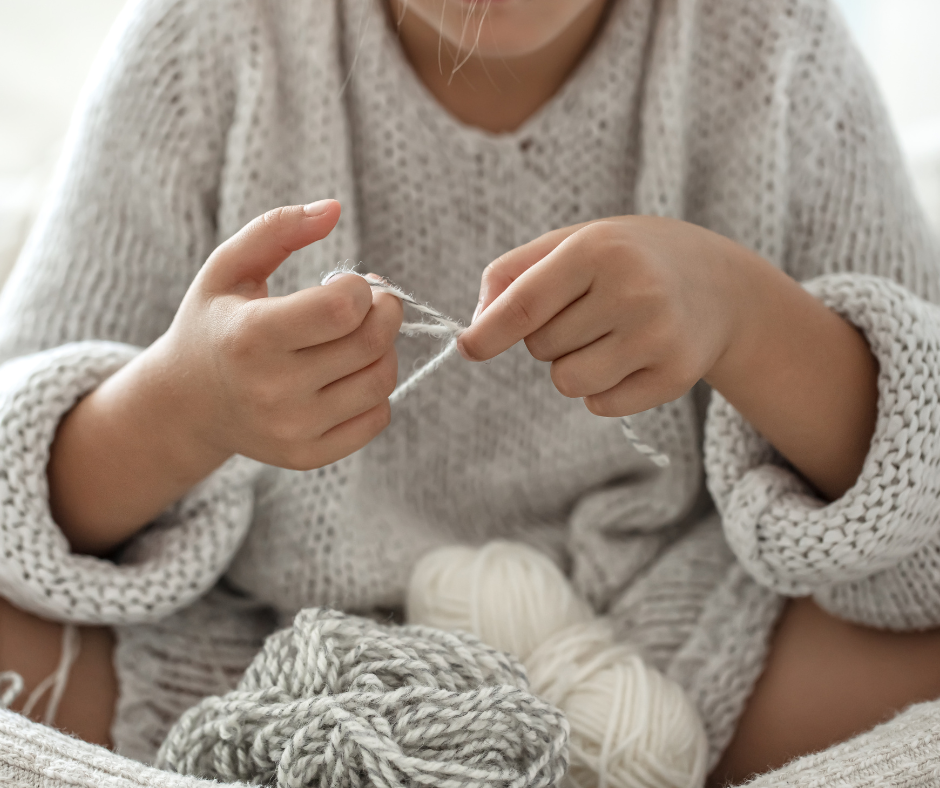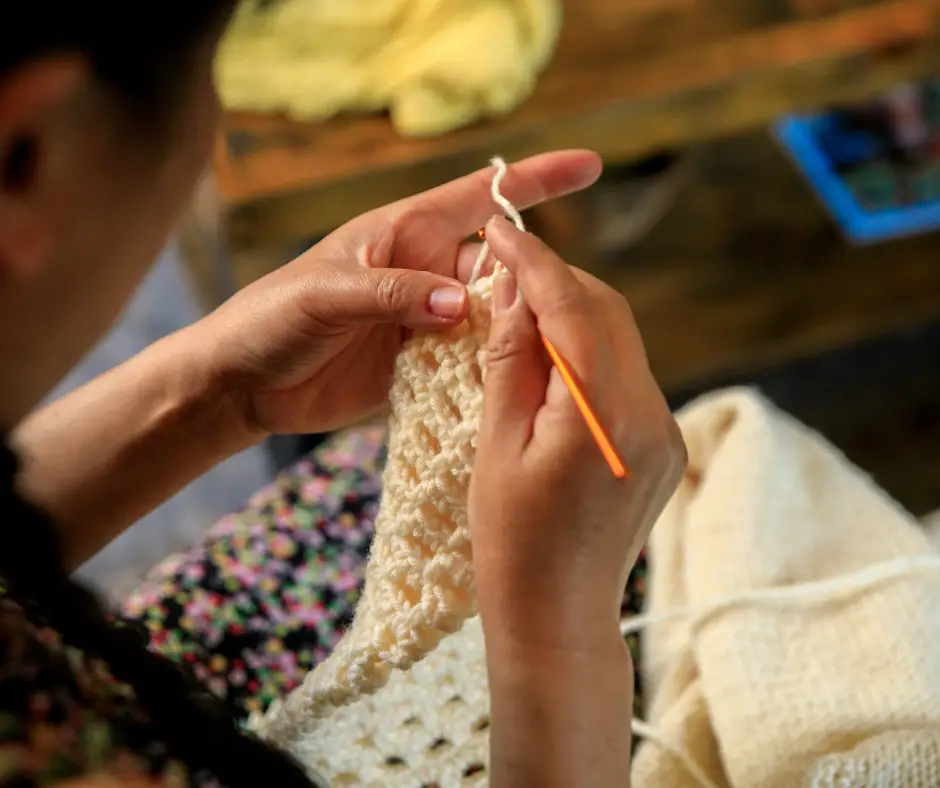Imagine the satisfaction of being able to create intricate crochet projects just by deciphering the codes in written patterns. In this blog post, we’ll guide you step-by-step in understanding and mastering how to read a crochet pattern, setting you on a path to creating beautiful handmade items without relying on video tutorials.
Key Takeaways
- Master essential crochet abbreviations and terms.
- Understand basic stitches, symbols, charts and pattern components for accurate interpretation of patterns.
- Practice interpreting instructions with beginner-friendly projects to refine skills.
Decoding Crochet Abbreviations and Terms
When you embark on your crochet journey, it’s important to grasp the language of crochet patterns. These written patterns compose of multiple abbreviations and terms that are integral to pattern reading.
Once you acquire the basic crochet abbreviations and terms, any pattern becomes approachable and less daunting.
Basic Stitch Abbreviations
Start by understanding the basic crochet stitches and their abbreviations used in crochet patterns, like:
Here are some common crochet abbreviations to get you started:
Ch – Chain
SC – Single Crochet
DC – Double Crochet
HDC – Half Double Crochet
TC – Treble Crochet
SS – Slip Stitch
YO – Yarn Over
FO – Fasten Off
INC – Increase
DEC – Decrease
REP – Repeat
RS – Right Side
WS – Wrong Side
ST – Stitch
TBL – Through Back Loop
TFL – Through Front Loop
BLO – Back Loop Only
FLO – Front Loop Only
MC – Magic Circle
CC – Contrast Color
DTR – Double Treble Crochet
FSC – Foundation Single Crochet
FDC – Foundation Double Crochet
TR – Treble Crochet
BL – Back Loop
FL – Front Loop
These are just some of the basic crochet abbreviations you might come across in crochet patterns.
Having these abbreviations at your fingertips will make deciphering patterns significantly easier.
Consider writing them down on a card or bookmark to keep them conveniently accessible while working on your projects.
Or print out and keep this handy crochet abbreviation chart to hand.
Common Crochet Terms
Crochet patterns also incorporate common terms to signify specific actions and stitches. A thorough understanding of these terms ensures pattern reading accuracy.
More terms and abbreviations will become evident as you advance in your crochet journey. Always consult the pattern’s notes section or glossary for unfamiliar terminology.
Actions and Special Stitches
Crochet patterns also incorporate abbreviations for specific actions and special stitches, including the use of a stitch pattern. For example, an asterisk (*) in a written crochet pattern denotes a point where you should repeat the sequence of stitches following the symbol. Using stitch markers can also be helpful in keeping track of these points.
By learning these additional abbreviations, you’ll be better equipped to handle more complex patterns and create diverse crochet projects. Most patterns will provide instructions for any unusual or particular stitches used, so be sure to review those before starting your project.
Interpreting Symbols and Charts
Crochet symbol charts provide a visual alternative to written instructions, broadening the possibilities for working with varied crochet patterns. These charts use symbols to represent each stitch, making it easier for some crocheters to visualize the pattern.
This section will help you comprehend crochet symbols and the technique of reading crochet charts.
Understanding Crochet Symbols
Each symbol in a crochet chart signifies a particular stitch or action. For instance, an oval represents a chain stitch, while a T-shape with an extended stitch and a bar across the top denotes a half-double crochet stitch.
Recognizing these symbols is key to understanding visual patterns. Always cross-check with the pattern’s key to confirm the correct symbol interpretation.
Reading Crochet Charts
To read a crochet chart, follow these steps:
- Begin at the bottom right corner of the chart.
- Progress upwards and to the left.
- Each symbol on the chart represents a specific stitch or action.
- Execute the stitches or actions in the order they appear on the chart.
When a pattern includes both written instructions and a chart, cross-referencing both is a wise strategy to verify your work. Remember that practice makes perfect, so don’t be discouraged if you find charts challenging at first.
Navigating Pattern Structure and Components
A crochet pattern typically consists of several components, such as:
- Pattern information
- Necessary materials
- Gauge
- Pattern notes
Understanding these components is crucial for accurately adhering to patterns and achieving the desired outcome.
This section explores each component to equip you effectively for any crochet pattern.
Pattern Title, Description, and Skill Level
The pattern title and description give a concise summary of the pattern and its complexity level. The skill level (beginner, easy, intermediate, or advanced) indicates the proficiency required to follow a pattern.
For beginners, selecting patterns that align with your skill level guarantees a seamless and enjoyable crochet experience.
Yarn, Hook Size, and Tools
The materials section of a crochet pattern lists the type of yarn, crochet hook size, and any additional tools or supplies required for the project. Choosing the right yarn and hook size is a fundamental step in creating your crochet project with the intended size and texture. Pay close attention to the pattern’s recommendations and gather all necessary materials before starting your project.
It is important to note that the yarn and hook size specified in the pattern are the ones
Gauge and Sizing
Gauge refers to the tension at which one crochets, while sizing indicates the size of the completed project. To measure gauge, crochet a swatch and count how many stitches and rows fit into a 4” (10cm) measurement. If your gauge is inaccurate, try again with a different size crochet hook until you achieve the correct tension.
Comprehending gauge and sizing is key to achieving the right fit in your crochet projects.
Mastering Pattern Instructions and Notations
In addition to understanding the structure and components of crochet patterns, mastering pattern instructions and notations is key to accurately read a crochet pattern and following it.
This section will help you understand the use of parentheses, brackets, and asterisks in crochet patterns, along with row and round instructions.
Parentheses, Brackets, and Asterisks
Parentheses, brackets, and asterisks are symbols used in crochet patterns to indicate how to work the pattern. Here’s what each symbol means:
- Parentheses denote a combination of stitches to be executed together.
- Brackets signify how many repetitions are required for a particular step.
- Asterisks indicate a point in the pattern where a sequence of stitches should be repeated.
Recognizing the meaning of these symbols is fundamental for accurate pattern following.
Row and Round Instructions
Row and round instructions differ in terms of the direction of work. Row instructions involve crocheting back and forth in lines, necessitating a turn of the work at the end of each row, while round instructions involve crocheting in a continuous spiral without turning the work, thereby creating a tube-like shape with no seams.
Familiarizing yourself with these crochet instructions will help you confidently tackle a variety of crochet projects.
Repeats and Sequence of Steps
Repeats and sequence of steps are fundamental aspects of crochet patterns. Repeats are a sequence of steps that occur multiple times throughout a pattern, while sequence of steps refers to the order in which stitches should be executed.
Mastering these concepts will enable you to easily follow and replicate patterns, as well as make adjustments or modifications if necessary.
Troubleshooting Common Crochet Pattern Challenges
It’s not uncommon to encounter challenges when working with crochet patterns. This section will cover how to handle mistakes, modify patterns for left-handed crocheters, and find help and resources when needed.
Addressing common crochet pattern challenges will help you grow into a more proficient and confident crocheter.
Dealing with Mistakes
When faced with mistakes in your crochet work, don’t be discouraged. There are several techniques for unravelling crochet stitches, such as:
- Inserting the hook into one strand of the first chain and rotating the hook in a circular motion to unravel the stitch
- Using a crochet hook to carefully pick out the stitches, one by one, until you reach the mistake
- Cutting the yarn near the mistake and then unraveling the stitches back to that point
Learning from mistakes is a natural part of the crochet process, and with practice, you’ll become more adept at fixing errors and refining your skills.
Adapting Patterns for Left-Handed Crocheters
For left-handed crocheters, adapting patterns can be as simple as reversing the pattern. Follow the same instructions but work in the opposite direction, starting with a double loop slip stitch and working rounds counter-clockwise.
There are many resources available online that provide detailed guides and tips for left-handed crocheters, making it easier to enjoy your craft regardless of your dominant hand.
Seeking Help and Resources
If you encounter difficulties with a crochet pattern, don’t hesitate to seek assistance. There are numerous resources available, including online tutorials, crochet groups or forums, and classes.
Experienced crocheters can also provide valuable advice and tips, so reach out to your crochet community for support and encouragement.
Practice Makes Perfect: Beginner-Friendly Crochet Projects
Now that you’ve gained the knowledge and skills to read crochet patterns, it’s time to put them into practice. This section introduces two beginner-friendly crochet projects: a basic scarf pattern and a washcloth pattern.
These projects will help you hone your pattern-reading skills and create beautiful, functional items.
Simple Scarf Pattern
A scarf is an excellent beginner project that allows you to practice various crochet stitches and techniques. Start by selecting a suitable yarn and crochet hook size, then follow the pattern instructions to create a cozy, stylish accessory.
As you work through the pattern, refer back to the abbreviations and terms you’ve learned, and watch your creation come to life with each next stitch.
Washcloth Pattern
A washcloth is another great beginner project, perfect for practicing your new crochet skills. Choose a durable cotton or cotton blend yarn and an appropriate crochet hook size for the pattern. As you work on the washcloth, focus on maintaining consistent tension and following the pattern instructions accurately.
Once completed, you’ll have a practical, handmade item that you can use and enjoy daily.
Summary
In this blog post, we’ve guided you through the process of learning how to read crochet patterns, from decoding abbreviations and terms to mastering pattern instructions and notations. With practice and perseverance, you’ll become a confident and skilled crocheter, ready to tackle a wide range of projects. Remember, practice makes perfect, so continue refining your skills and exploring the world of crochet patterns. Happy crocheting!
Frequently Asked Questions
How do you read and understand crochet patterns?
To read and understand crochet patterns, you should identify any repeats indicated by asterisks (*) and follow the steps given for each row. Additionally, pay attention to instructions for each stitch to ensure accuracy in your project.
How do you read crochet brackets?
Crochet brackets [ ] indicate that the instructions within should be repeated a specified number of times, or worked in one stitch, space or loop. Thus, it is important to closely follow any instructions given within brackets for successful completion of the crochet project.
What does SC in CH 1 SP mean?
SC stands for single crochet and CH 1 SP means chain 1 space, which is the space formed by a single chain stitch. Together, SC in CH 1 SP means to single crochet in the chain 1 space.
What are some essential crochet abbreviations every beginner should know?
Crocheting requires familiarity with abbreviations such as ch (chain), sl st (slip stitch), sc (single crochet), hdc (half double crochet), dc (double crochet) and tr (triple crochet). Knowing these will help any beginner get started.
How do I read a crochet chart?
To read a crochet chart, begin at the bottom right corner and progress upwards and to the left, following the symbols that represent specific stitches or actions. Be sure to pay attention to the symbols and avoid any artifacts at the end for an accurate reading.
